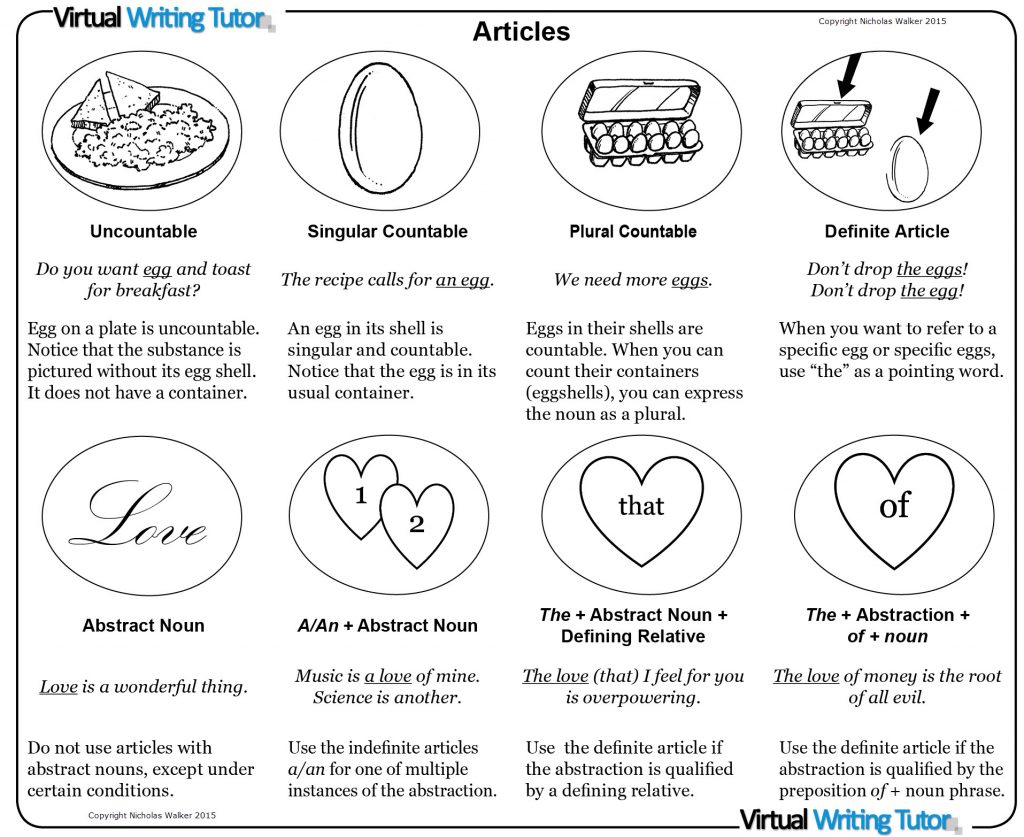
What are articles?
Articles are one of three types of determiner (articles, possessives, demonstratives) that come at the beginning of noun phrases. They help us to say whether things are known or unknown to the reader (the man outside vs. a man outside) and whether we are speaking about particular examples of something (a car caught on fire) or talking about something in a more general sense (the car has changed Canadian cities forever).
According to Swan (1995), articles are very difficult to master, but article errors don’t usually interfere with communication because it is usually possible to understand a sentence with all of the articles left out.
Examples of article errors
The most common error that students make with articles is to leave them out when they are expected (during winter, it is most important holiday). Also common are articles used with uncountable nouns (I did a travel last year) and articles used with possessive forms of people’s names (the John’s house) .
Missing articles
INCORRECT: During fall and winter I’m coming to school by car.
CORRECT: During the fall and winter I’m coming to school by car.
EXPLANATION: Use the definite article “the” with the names of seasons.
INCORRECT: I don’t have job currently, but I have job in summer.
CORRECT: I don’t have a job currently, but I have a job in the summer.
EXPLANATION: The noun “job” is countable, so must use a singular or plural form. For the singular form of countable nouns we use “a” or “an.”
INCORRECT: Nearly half million people entered the country.
CORRECT: Nearly half a million people entered the country.
EXPLANATION: The noun “million” is countable, so must use a singular or plural form. For the singular form of countable nouns we use “a” or “an.”
Articles and uncountable nouns
INCORRECT: I did a travel last year.
CORRECT: I did a trip last year.
EXPLANATION: Do not use an indefinite article with uncountable nouns like “travel.”
